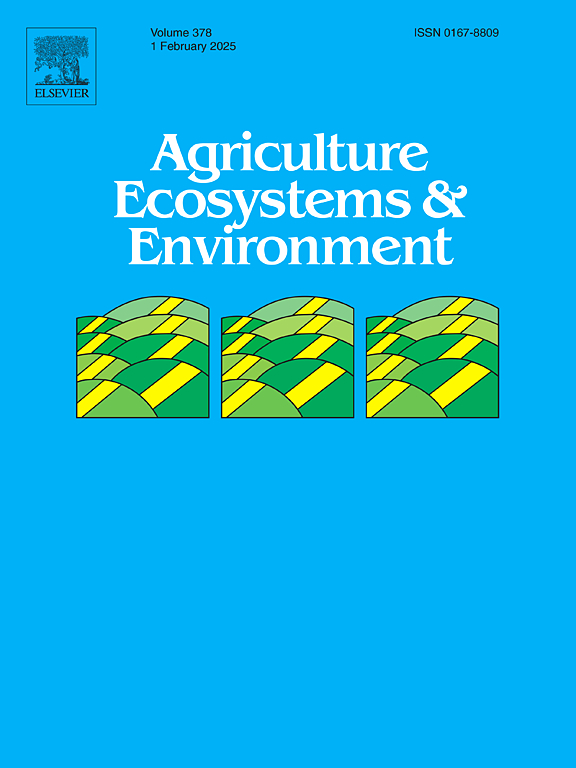Soil fauna, litter quality and land use as decomposition factors in the Brazilian semi-arid region
IF 6
1区 农林科学
Q1 AGRICULTURE, MULTIDISCIPLINARY
引用次数: 0
Abstract
Soil fauna mediate litter decomposition in many terrestrial ecosystems, and thus understanding how land use impacts the process has important implications. This study was conducted under semi-arid conditions in Minas Gerais, Brazil, using litterbags arranged in a randomized block design with four replications. The treatments included three land use systems (native forest, maize, and cocoa) and two mesh sizes (0.297 mm for mesofauna access and 4 mm for total soil fauna access), with decomposition assessed at seven-time intervals: 0, 30, 90, 150, 210, 270, and 330 days. Litter decomposition rates and the role of soil fauna were evaluated. Decomposition in natural vegetation was slower than in agricultural systems, despite its higher species richness and Shannon (H′) and Simpson (Es) diversity indices. Agroecosystems exhibited faster decomposition, with perennial crops outperforming conventional crops under unrestricted fauna access (4 mm mesh) and showing similar rates under macrofauna-restricted conditions (0.297 mm mesh). These findings contribute to understanding the interplay between soil fauna, litter decomposition, and land use systems in semi-arid regions.

巴西半干旱区土壤动物、凋落物质量和土地利用分解因子
在许多陆地生态系统中,土壤动物介导凋落物分解,因此了解土地利用如何影响这一过程具有重要意义。本研究在巴西米纳斯吉拉斯州半干旱条件下进行,采用随机区组设计,设置4个重复的垃圾袋。这些处理包括三种土地利用系统(原生森林、玉米和可可)和两种网格尺寸(中系动物通道0.297 mm和总土壤动物通道4 mm),并在7个时间间隔(0,30,90,150,210,270和330天)对分解进行评估。评价了凋落物分解速率和土壤动物的作用。自然植被的物种丰富度、Shannon (H’)和Simpson (Es)多样性指数均高于农业系统,但其分解速度较农业系统慢。农业生态系统表现出更快的分解速度,多年生作物在动物不受限制的条件下(4 mm目)优于传统作物,在大型动物限制的条件下(0.297 mm目)表现出相似的分解速度。这些发现有助于理解半干旱区土壤动物、凋落物分解和土地利用系统之间的相互作用。
本文章由计算机程序翻译,如有差异,请以英文原文为准。
求助全文
约1分钟内获得全文
求助全文
来源期刊

Agriculture, Ecosystems & Environment
环境科学-环境科学
CiteScore
11.70
自引率
9.10%
发文量
392
审稿时长
26 days
期刊介绍:
Agriculture, Ecosystems and Environment publishes scientific articles dealing with the interface between agroecosystems and the natural environment, specifically how agriculture influences the environment and how changes in that environment impact agroecosystems. Preference is given to papers from experimental and observational research at the field, system or landscape level, from studies that enhance our understanding of processes using data-based biophysical modelling, and papers that bridge scientific disciplines and integrate knowledge. All papers should be placed in an international or wide comparative context.
 求助内容:
求助内容: 应助结果提醒方式:
应助结果提醒方式:


